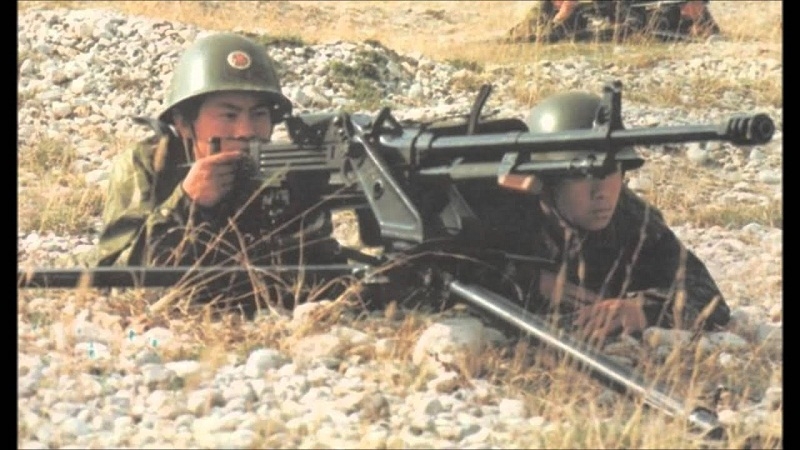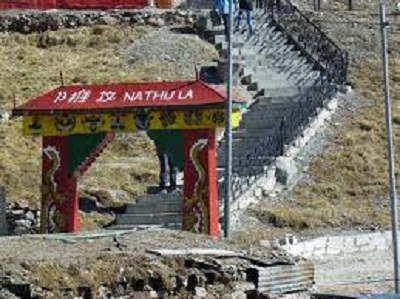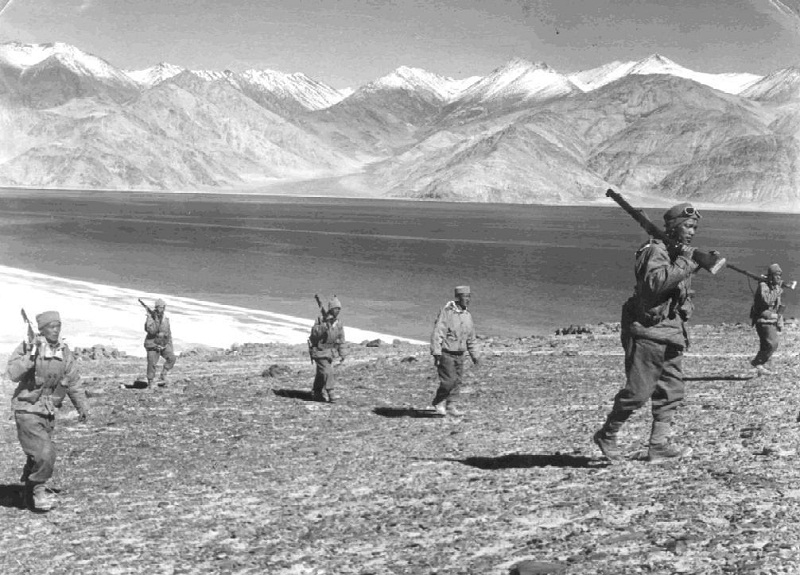Forgotten War At Nathu La And Cho La

In 1967, India got opportunity to get better of China after suffering the humiliation of 1962. In 2018-19, an Indian Soldier filmed a video depicting Indian and Chinese soldiers jostling and pelting stones at each other at the Line of Actual Control in Arunachal Pradesh and Sikkim. But only old Soldiers of my seniority know that it was a common feature in 1960s when Soldiers from both sides hurled stones at each other along many points at the disputed boundary of Aksai Chin.
In September 1967, a face-off with Chinese Troops lasted for over two months in Sikkim at the other end of the Himalayas. It was the last time that roughhousing of Indian and Chinese Soldiers escalated into a Bloody Fire Fight. That brief but intense conflict resulted in deaths of approximately 300 Chinese and 100 Indian Soldiers.
Story of this forgotten battle sheds light on how shrill Political Messaging can have disastrous consequences on the ground.1960s were a bad time in India-China relations. The brief, brutal War of 1962 was a debacle in which India lost 14,500 square miles of territory, details and history of which are yet not declassified.
In 1967, Indian and Chinese Soldiers quarreled over the question of a fence at Nathu La, most strategic pass in Sikkim. Indians wanted to construct an iron fence to put an end to Chinese incursions. To the Chinese, this seemed like arrogant aggression, coming from an Army they had beaten soundly just five years earlier.
This story originates in Peking (present Bejing), capital of China, located 2,888 km East of Nathu La. Its Hero is K Raghunath, a Career Diplomat, who later became Foreign Secretary authoring famous “Gujral Doctrine” which guided India’s Foreign Policy in the 1990s. In 1965, K Raghunath was posted in Peking as Head of ISI, an acronym for ‘Information Services of India’.
As a young Second Secretary at the Indian Embassy, Raghunath became embroiled in a bizarre Spying Scandal. ISI’s toughest job was coping with Chinese restrictions. In early June 1967, Raghunath, along with another Indian diplomat, P Vijayan, was caught taking photographs of site of Sleeping Buddha near Peking. The Ministry of Foreign Affairs in Peking alleged that the photographs were taken to create a Topographical Map of a “Prohibited Area”.
 K Raghunath was accused of collecting “Political and Military Information, Sneaking into Government Institutions, and Impersonating Embassy Members of Friendly countries”. He was put on Public Trial. All of India and China went into an uproar. A film, “Severely Punish the Indian Spy Raghunath,” was made and screened in every Chinese Theater to showcase his alleged crimes.
K Raghunath was accused of collecting “Political and Military Information, Sneaking into Government Institutions, and Impersonating Embassy Members of Friendly countries”. He was put on Public Trial. All of India and China went into an uproar. A film, “Severely Punish the Indian Spy Raghunath,” was made and screened in every Chinese Theater to showcase his alleged crimes.
India responded with indignation and in return, China expelled K Raghunath. He was given a Hero’s Welcome in India. This incident brought years of distrust between two countries, simmering since 1962, to the surface. A series of Diplomatic Notes were exchanged between Indian Ministry of External Affairs, its Embassy in China and the Chinese Foreign Ministry, revealing emergence of a dangerous New Strategic Reality. India protested a series of conflicts breaking out on the Himalayan Borders. These ill feelings were exacerbated on India’s side, by growing evidence of Sino Pak Collaboration.
During course of these exchanges, Pakistan attacked India in September 1965. Chinese Troops crossed the Line of Actual Control into Ladakh on 19th September 1965, kidnapping and killing three Indian Soldiers posted at Tsaskur. Chinese had also taken action in the Eastern Himalayas, making a strong attempt to occupy the Strategic Nathu La Pass in Sikkim.
Lieutenant General Sagat Singh was then General Officer Commanding (GOC) 17th Mountain Division in Sikkim. Tensions between two countries grew thereafter. Embassy records from 1966 reveal a flurry of official dispatches, following each other in quick succession from the Indian Embassy in Peking, suggesting that Indians residing in China were ill-treated, Gurudwara in Tientsin (now Tianjin) had been desecrated and a Parsi temple in Shanghai was forcibly occupied by Chinese Army.
Standard Chinese response to any Indian Diplomatic Protests remained that India was the “aggressor”. By the time Raghunath was accused and expelled as a spy, the atmosphere had truly soured. So when Indian forces along the Eastern Himalayas started to erect a fence at the Nathu La pass, mere months after the young diplomat’s expulsion from China, they found themselves in the midst of a Military Clash. Recently declassified CIA assessment identified this unattended build up of political tension between the two countries as source of the eventual Border Clash.
Nathu La conflict was preceded by days of arguments over the idea of a fence along the Pass. India felt that a physical barrier might help stop daily arguments between soldiers over who should stand where and how, on that part of the border. The Chinese, evidently, disagreed. Several attempts were made to stop Indians from erecting the fence.
One of these arguments led dramatically, to the spectacles of a Chinese Political Commissar being broken during a heated exchange on 10 September 1967. The commissar’s role in the Chinese system was important, and his stature was high. Having his spectacles crushed in undignified jostling with the Indians may well have dealt a blow to his self-esteem.

Immediately the Chinese Political Commissar, with a section of Infantry came to the centre of the Pass and asked Colonel Rai Singh to stop laying the wire. Orders to the Indian Army were clear. They were not to blink. An argument started which soon built up into a scuffle. In the ensuing melee, the Commissar again got roughed up. Infuriated Commissar and Chinese Troops retreated to their Bunkers and Engineers resumed laying the wire. Within a few minutes of this, a whistle was heard on the Chinese side and their North Posts opened coordinated Medium Machine Gun fire on Indian Troops at around 7.30 AM, minutes after the Commissar and his Troops returned to their bunker. Close to 70 Indian casualties were incurred in that first strike itself, as the Indians found themselves exposed and unprepared in the open.
Nath La Pass Area is completely devoid of cover and Soldiers of 70 Field Engineer Company and 18 Rajput were caught in the open and suffered heavy casualties which included Colonel Rai Singh who was wounded. That morning was marked by some exceptional displays of bravery from the Indian Forces.
Captain A S Dagar of the 2nd Grenadiers and Major Harbhajan Singh of the 18th Rajput rallied Grenedier Commando Platoon and available troops to assault the Chinese Gun Positions, Colonel Rai Singh, in spite of being wounded, gave them effective fire support along with whatever was available with him.
Both young officers were martyred heroically in the attempt. Around 42 Infantry Soldiers also lost their lives along with these officers. Chinese suffered around 200 casualties. Colonel Rai Singh was later awarded the Mahavir Chakra for his actions under fire, Captain A S Dagar and Major Harbhajan Singh were posthumously awarded the Vir Chakra and Mahavir Chakra respectively. A total of 47 Gallantry awards were bestowed on the Troops who fought at Nathu La.
On 12 September, a day after open hostilities, detailed notes were exchanged again. China blamed India in a note that claimed 60 Indian “aggressor troops” had opened fire; by noon, according to this account, they had killed or wounded 25 Chinese guards, and destroyed Chinese temples and houses.
Indian “reactionaries” were at the “height of their frenzy,” the note complained. It issued, in no uncertain terms, a warning: “Do not misjudge the situation and repeat your mistake of 1962. Indian Army obviously did not. Over the next five days, the Indian Army hit back with superior Artillery, and fought a few hand-to-hand battles at and around the pass.
The duel continued for five days, after which the Nathu La fight effectively came to an end. It was followed only by a short skirmish which also took place nearby on 01st October, at the Cho La pass. A Gurkha unit gave the Chinese side a “bloody nose” once again on that occasion, occupying a position after a brutal khukri assault which left 26 Chinese Soldiers dead.
Nathu La Conflict quickly became a matter of grave International Concern. Indian Deputy Prime Minister, Morarji Desai, was on a visit to the US at the time the clashes started. In Washington DC, the Nathu La skirmish ranked second only to an update from Vietnam. The Conflict did not escalate into a full-fledged war as a CIA assessment noted a sudden increase in Soviet military buildup on Chinese Border from 15 to 21 Ground Divisions and two Tank Divisions due to which pressure on the Indian borders eased. Chinese attention was diverted to the Manchurian border and Russia, a former ally was now branded “Revisionist Traitors” by Chinese Communist Party.
While the de escalation in 1967 Sino Indian Conflict was swift, it became clear over the next few years that China was interfering in the insurgencies that India was battling in its North Eastern Regions by imparting training and supplying arms to the Mizo and Naga rebellions. An independent reports prepared by the CIA confirm this.


